Traces of toxic chemicals have been found at a US military camp but there is no evidence yet to support claims that Agent Orange was buried there in 1978, South Korean and American investigators said.
Dangerous levels of trichloroethylene and tetrachloroethylene were detected in underground waters at Camp Caroll near the southeastern city of Daegu, the joint team said in a statement. Trichloroethylene is commonly used as an industrial solvent and tetrachloroethylene is used for dry cleaning of fabrics.
The team has been investigating allegations that large amounts of Agent Orange were dumped and buried at the US logistics base in 1978. The investigators also said they had begun collecting earth samples from 43 different sites at the base, including one where a US veteran said 250 barrels containing the toxic defoliant were buried. The team's findings will be made public near the end of August, they said.
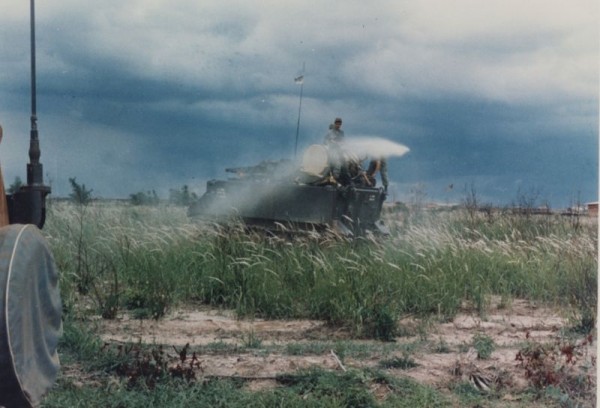
Following the US veterans' claim made on American television, the US military in Korea said in May that a "large number" of drums containing pesticides, herbicides and solvents were buried there in 1978. But it said there was no specific information that Agent Orange was in the containers. It said the materials along with 40-60 tonnes of soil were removed from the site in 1979-1980 and disposed of elsewhere.
The US has based tens of thousands of service personnel in the South since the 1950-1953 Korean War, with 28,500 troops currently stationed in the country.
During the Vietnam War US aircraft sprayed Agent Orange and other herbicides containing potentially cancer-causing dioxin to strip trees of foliage, in a bid to deprive communist forces of cover and food. (TerraDaily)
Agent Orange was used in Korea in the late 1960s. Republic of Korea troops were the only personnel involved in the spraying, which occurred along the Korean Demilitarized Zone (DMZ). Citing declassified U.S. Department of Defense documents, Korean officials fear thousands of its soldiers may have come into contact with the deadly defoliant in the late 1960s and early 1970s. According to one top government official, as many as '30,000 Korean veterans are suffering from illness related to their exposure'. The exact number of GIs who may have been exposed is unknown. But C. David Benbow, a North Carolina attorney who served as a sergeant with Co. C, 3rd Battalion, 23rd Infantry Regiment, 2nd Infantry Division, along the DMZ in 1968 - 69, estimates as many as '4,000 soldiers at any given time' could have been affected.
In 1999, about 20,000 South Koreans filed two separated lawsuits against U.S. companies, seeking more than $5 billion in damages. After losing a decision in 2002, they filed an appeal.
In January 2006, the South Korean Appeals Court ordered Dow Chemical and Monsanto to pay $62 million in compensation to about 6,800 people. The ruling acknowledged that "the defendants failed to ensure safety as the defoliants manufactured by the defendants had higher levels of dioxins than standard", and, quoting the U.S. National Academy of Science report, declared that there was a "causal relationship" between Agent Orange and 11 diseases, including cancers of the lung, larynx and prostate. The judges failed to acknowledge "the relationship between the chemical and peripheral neuropathy, the disease most widespread among Agent Orange victims" according to the Mercury News.
The United States local press KPHO-TV in Phoenix, Arizona alleged that the United States Army has buried Agent Orange in Camp Carroll, the U.S. Army base located in Gyeongsangbuk-do, Korea.It is based on the claim of three U.S. Army veterans. They claimed approximately 250 55 gallon drums of Agent Orange were buried at Camp Carroll in 1978, which was indicated as 'Chemicals type Agent Orange' or 'Province of Vietnam, Compound Orange' with stripe around the barrel dated 1967 for the Republic of Vietnam. The South Korean Ministry of Environment announced that they will request cooperative investigation at Camp Carroll officially.The USFK issued a statement that confirmed that barrels were buried there, but all (plus an additional 60 tons of soil) were removed in 1996. (CyberSarge's)
Camp Carroll is located on the south east portion of South Korea, in Waegwan, close to the city of Daegu. It is named after Sergeant First Class Charles F. Carroll, a posthumous recipient of the Distinguished Service Cross for his acts of heroism during the Korean War.
Though small in size, Camp Carroll holds a population of approximately 3000. The population itself consists of Eighth Army personnel, employees and contractors, as well as Korean Augmentation to the U.S. Army (KATUSA) soldiers. Warehouses and lots make up a large portion of the location, as one of its main functions is to house war reserve stocks. A Post Exchange (PX), commissary, indoor and outdoor swimming pools, bowling center, library, community center, and various other amenities can also be found at Camp Carroll.
In May 2011 an interview with three United States Forces Korea veterans revealed that in 1978 approximately 250 55 gallon drums of chemicals believed to be Agent Orange were buried at Camp Carroll. On 22 May 2011, the Eighth Army admitted that chemicals, pesticides, herbicides and solvents had been buried at Camp Carroll in 1978, but that the materials and 60 tons of dirt were subsequently removed in 1979-1980. A joint US-ROK investigation is continuing although nothing has been found as of 22 June 2011.
While in Vietnam, the veterans were told not to worry, and were persuaded the chemical was harmless.After returning home, Vietnam veterans began to suspect their ill health or the instances of their wives having miscarriages or children born with birth defects may be related to Agent Orange and the other toxic herbicides to which they were exposed in Vietnam. Veterans began to file claims in 1977 to the Department of Veterans Affairs for disability payments for health care for conditions they believed were associated with exposure to Agent Orange, or more specifically, dioxin, but their claims were denied unless they could prove the condition began when they were in the service or within one year of their discharge.
By April 1993, the Department of Veterans Affairs had only compensated 486 victims, although it had received disability claims from 39,419 soldiers who had been exposed to Agent Orange while serving in Vietnam.
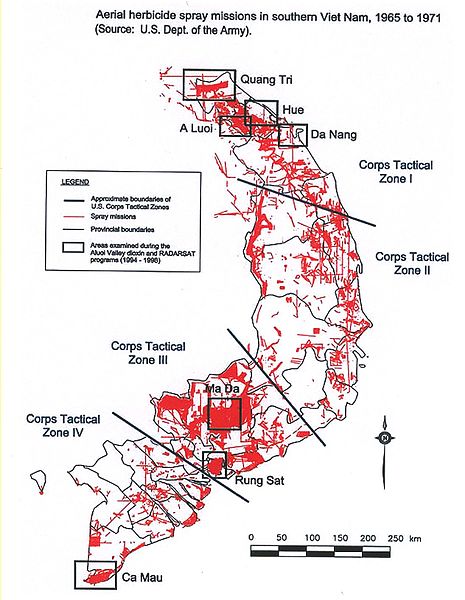
During the Vietnam War, between 1962 and 1971, the United States military sprayed 12,000,000 US gallons (50,000,000 L) of chemical herbicides and defoliants in Vietnam, eastern Laos and parts of Cambodia, as part of Operation Ranch Hand. The program's goal was to defoliate forested and rural land, depriving guerrillas of cover; another goal was to induce forced draft urbanization, destroying the ability of peasants to support themselves in the countryside, and forcing them to flee to the U.S. dominated cities, thus depriving the guerrillas of their rural support base and food supply.
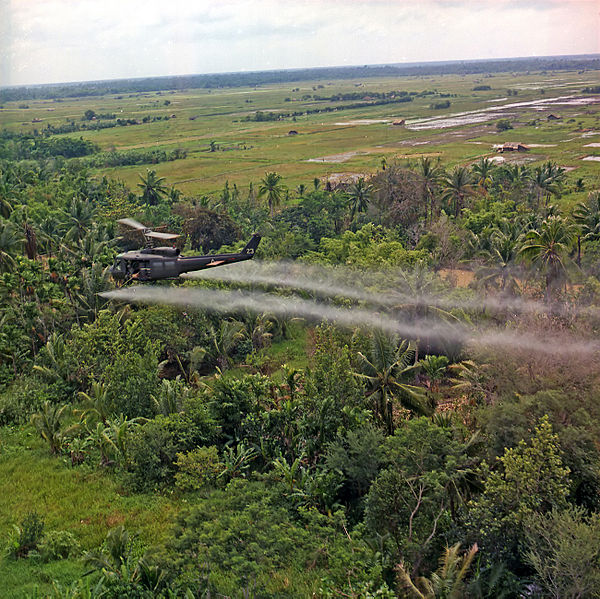
The Vietnam Red Cross reported as many as 3 million Vietnamese people have been affected by Agent Orange, including at least 150,000 children born with birth defects.According to Vietnamese Ministry of Foreign Affairs, 4.8 million Vietnamese people were exposed to Agent Orange, resulting in 400,000 people being killed or maimed, and 500,000 children born with birth defects.
Children in the areas where Agent Orange was used have been affected and have multiple health problems, including cleft palate, mental disabilities, hernias, and extra fingers and toes. In the 1970s, high levels of dioxin were found in the breast milk of South Vietnamese women, and in the blood of U.S. soldiers who had served in Vietnam.The most affected zones are the mountainous area along Truong Son (Long Mountains) and the border between Vietnam and Cambodia. The affected residents are living in substandard conditions with many genetic diseases.
About 28 of the former US military bases in Vietnam where the herbicides were stored and loaded onto airplanes still have high level of dioxins in the soil, posing a health threat to the surrounding communities. These 'hotspots' have dioxin contamination up to 350 times higher than international recommendations for action. The contaminated soil and sediment continue to affect the citizens of Vietnam, poisoning their food chain and causing illnesses, serious skin diseases and a variety of cancers in the lungs, larynx, and prostate.
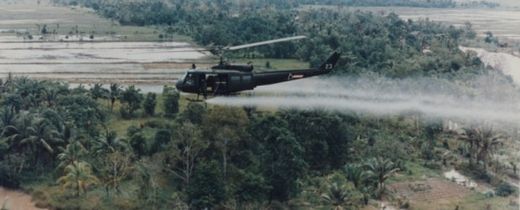
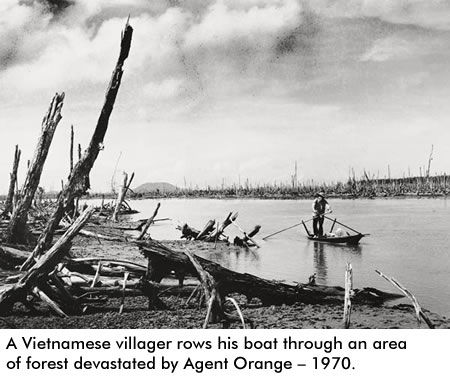
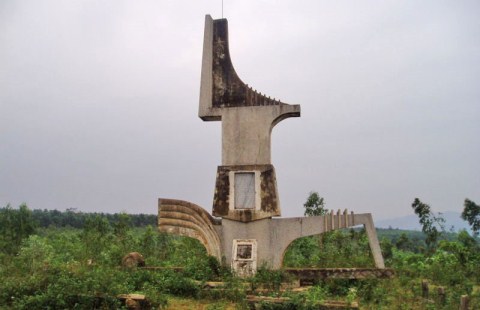
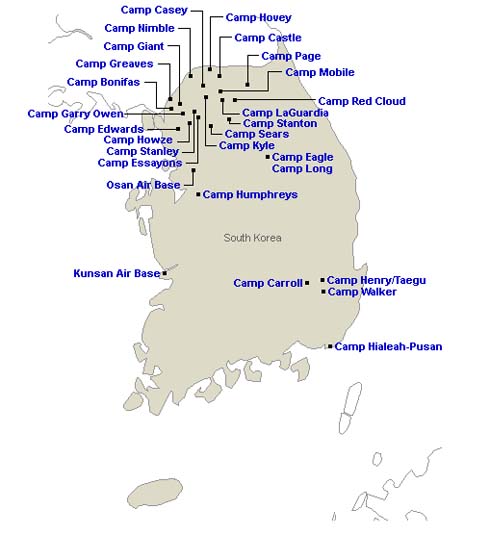
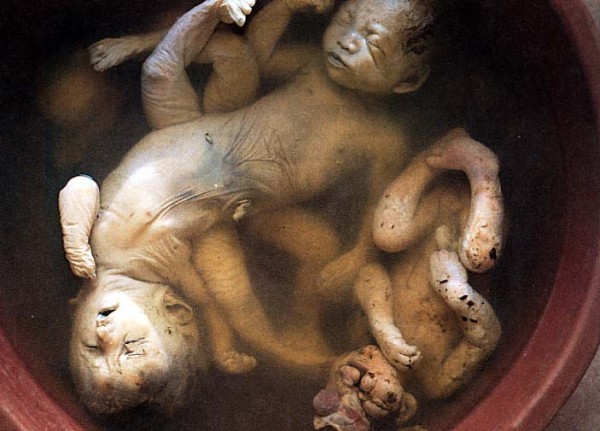



Reader Comments
There will be a reckoning...